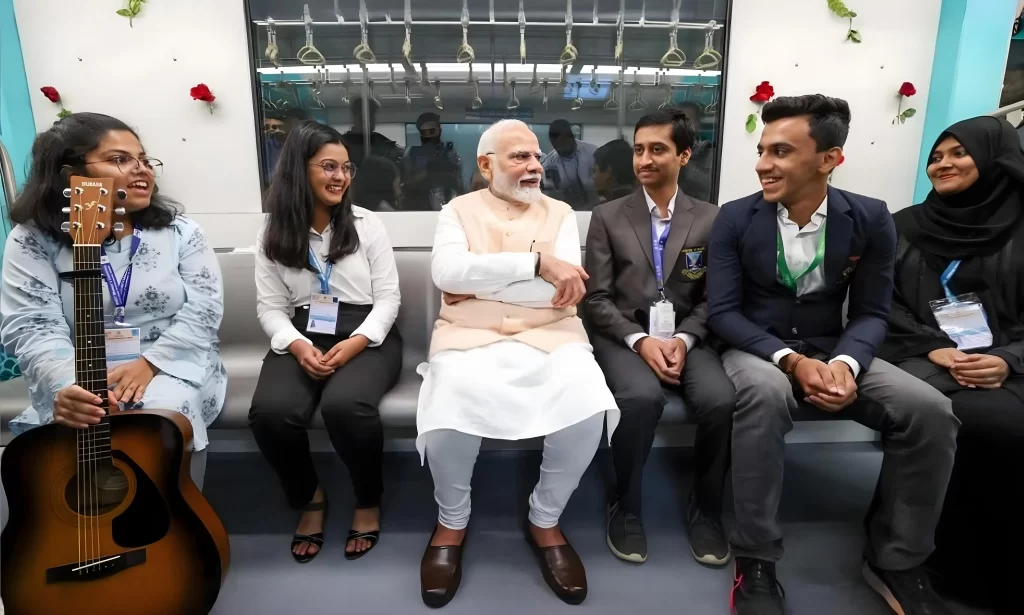Mumbai’s much-awaited Metro Line 3 opened to the public today, marking a significant milestone in the city’s efforts to improve public transport and ease road congestion. This underground metro line, stretching from Colaba in South Mumbai to SEEPZ in the north, covers 33.5 kilometers and includes 27 stations. It is expected to drastically reduce travel time for millions of daily commuters.
The new metro line offers seamless connectivity to key areas of the city, passing through major commercial, residential, and industrial hubs like Cuffe Parade, Mahalaxmi, Worli, and Bandra-Kurla Complex (BKC). With ticket fares ranging between ₹10 and ₹60, depending on the distance, the line is designed to be affordable and efficient for Mumbai’s busy population. The service will run from 5:30 AM until midnight, with peak-hour train intervals of just 10 minutes.
Mumbai Metro Line 3 is expected to ease the burden on the overworked Western Railway suburban line, which currently handles more than 3 million passengers daily. By diverting a significant portion of that load, the metro will provide commuters with a faster and more comfortable alternative to the city’s already crowded local trains and buses.
One of the biggest advantages of the new metro line is the drastic reduction in travel times. For instance, the journey between Colaba and SEEPZ, which normally takes over an hour during rush hour by road, will now be reduced to just 30 minutes. This is expected to make a significant difference for professionals working in commercial hubs like BKC, providing a faster and more convenient commuting option.
Mumbai Metro Line 3’s state-of-the-art trains come equipped with air conditioning, advanced signaling systems, and energy-efficient features like regenerative braking to save electricity. The underground nature of the metro also means that it will contribute to reducing the city’s noise pollution and free up space on the roads above.
The stations themselves are designed with modern amenities, including elevators, escalators, and facilities for differently-abled commuters, ensuring easy access for all. Additionally, commuters will benefit from smart cards and a mobile app for ticketing, providing a cashless and contactless payment experience.
Line 3 also integrates smoothly with Mumbai’s existing transportation networks. Passengers will be able to make easy transfers between the metro, suburban trains, buses, and other metro lines, offering an integrated travel solution for the city.
The opening of this metro line comes as a significant relief for the city’s residents, as Mumbai’s roads have been struggling with severe traffic congestion and long commute times. The metro’s efficient, eco-friendly design, coupled with its ability to carry over 1.5 million passengers daily, marks a new era in Mumbai’s urban transportation. This development is not just about providing convenience but also reducing the environmental impact of transportation in one of India’s most populous cities.
With Mumbai Metro Line 3 now open, the city’s public transportation system takes a huge step towards meeting the growing demands of its population while offering a faster, cleaner, and more sustainable way to travel across the city.

